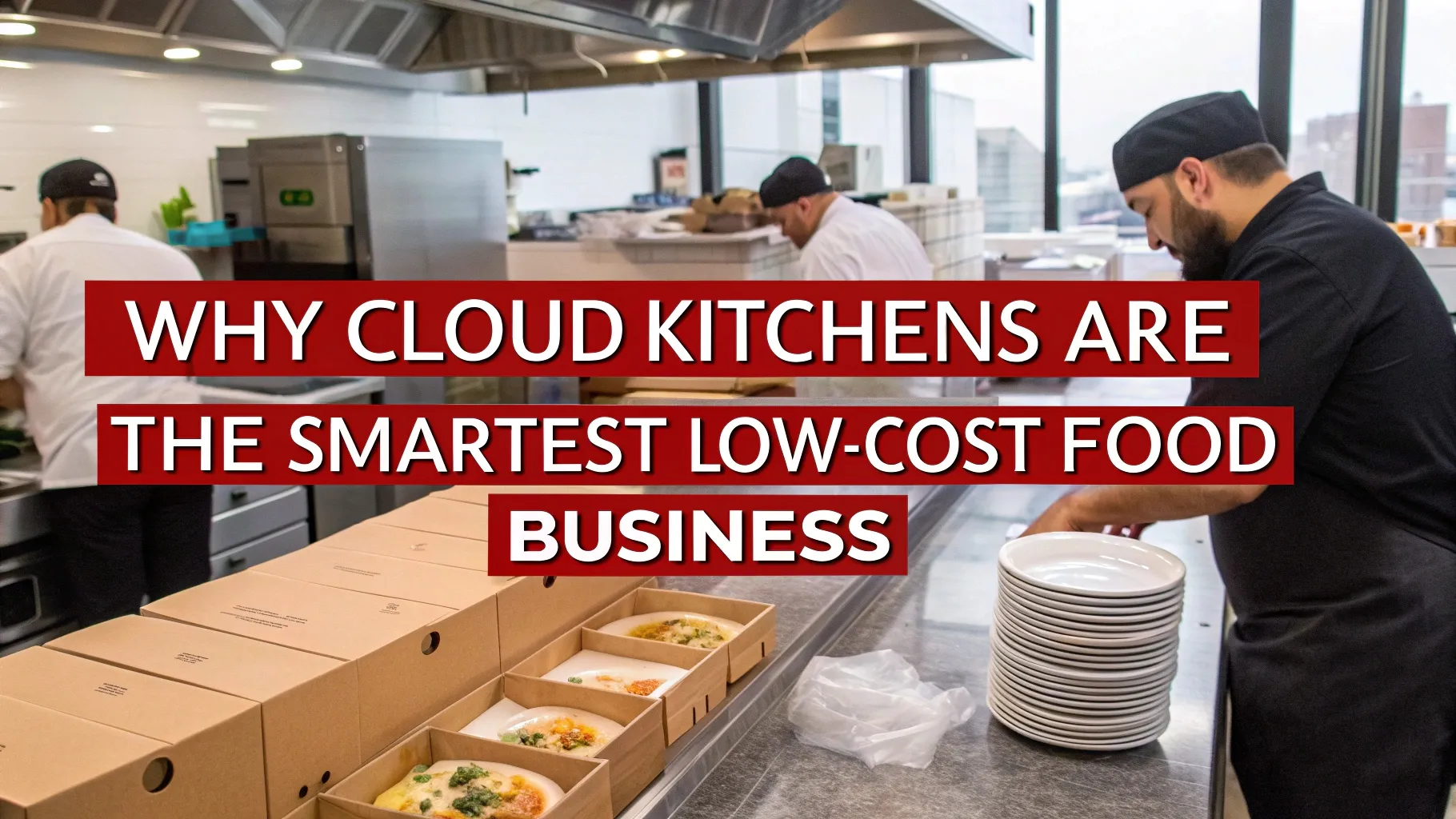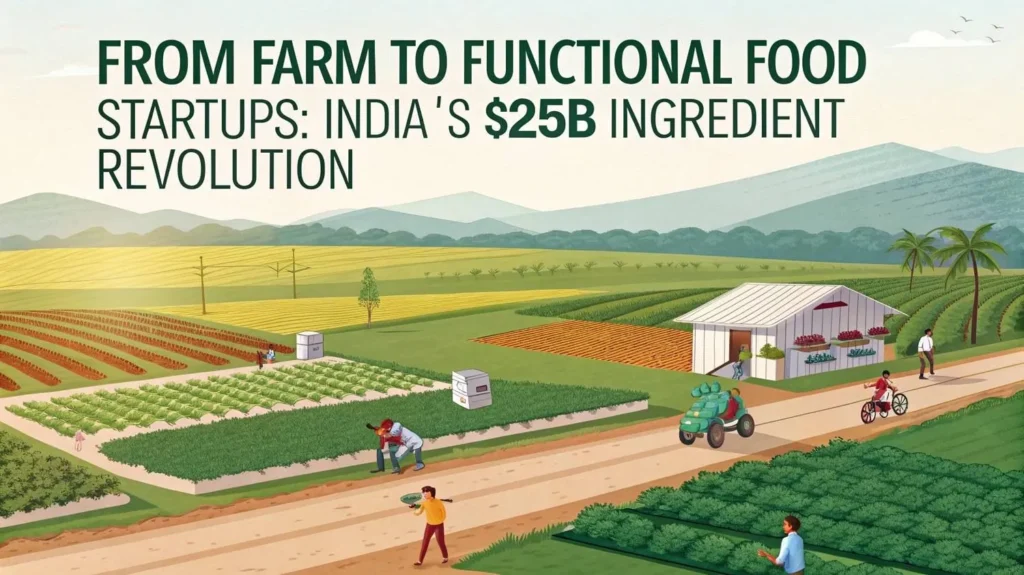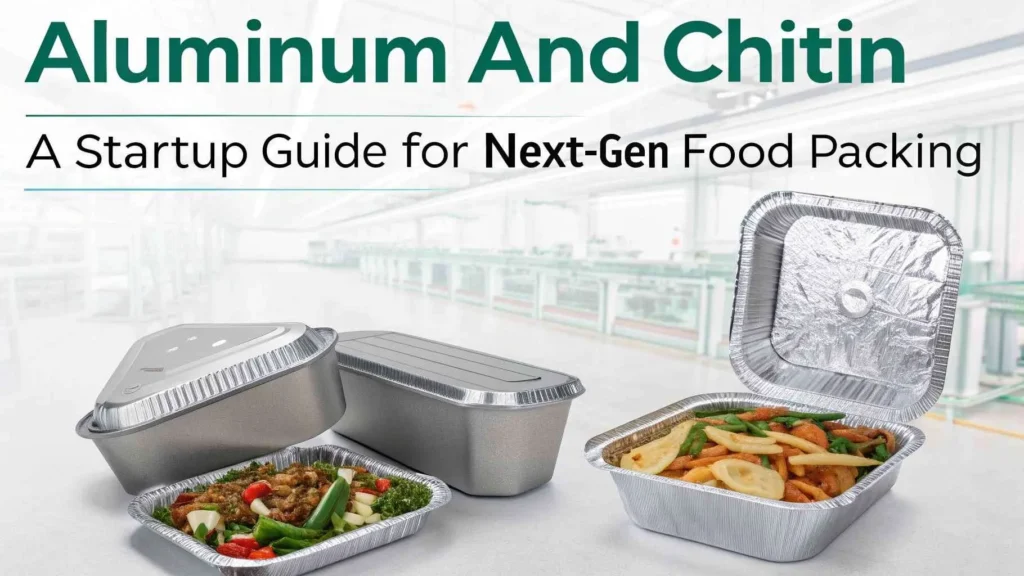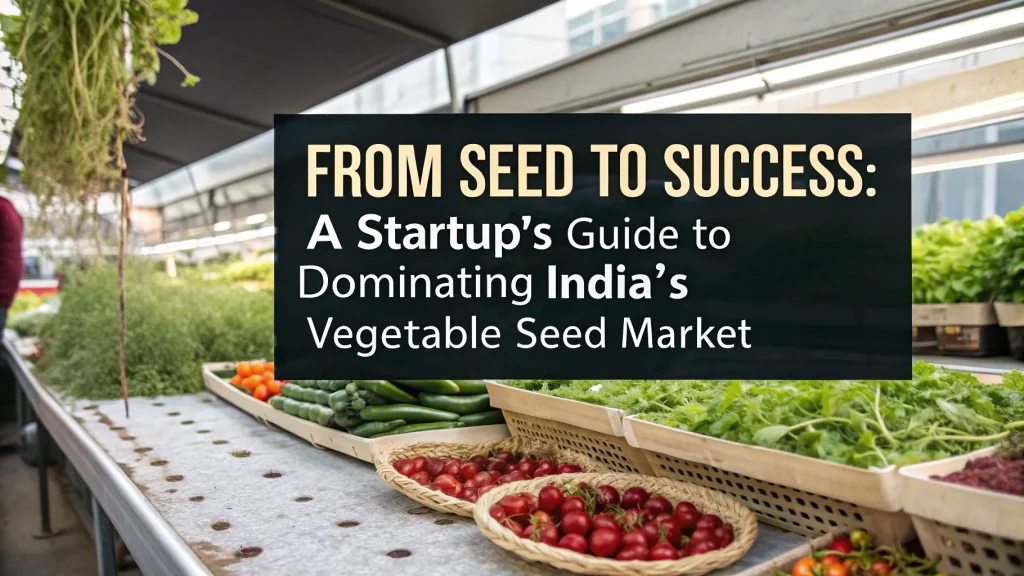The Food Industry Revolution Without Dine-In Settings
In India’s metro areas and even in Tier-II cities, a quiet transformation is happening in the food business. This transformation isn’t accompanied by big billboards or grand celebrations. Rather, it happens from humble industrial offices, cellars, and even shared kitchen workspaces. The reality of cloud kitchens has emerged. This new model not only transforms the way we consume food but also alters the way we set up food businesses in a digital driven economy.
Cloud kitchens offer a flexible, smart, and easily scalable solution when compared to traditional restaurants that require a significant investment of capital, expensive real estate, staff, and other resources. For many people, such as home cooks and entrepreneurs in the food technology sector, cloud kitchens provide an efficient way to enter a low-budget expanding market.
This article describes, with the help of market data, operational insights, demand forecasts and India’s evolving food economy, why cloud kitchens are the most intelligent low-investment food business of today.
Understanding India’s Love for Delivery-First Dining: Current Trends and Market Size
The emergence of cloud kitchens stems from urbanization in India. People are busier than ever with 9-5 jobs and the growing gig economy. The rise of food delivery services like Zomato and Swiggy also add to the convenience.
Forecast India Cloud Kitchen Market Size and Growth Rate (INR Cr) 2025-2030
| Year | Estimated Market Size (INR Cr) | Annual Growth Rate | Key Growth Drivers |
| 2025 | ?7,300 Cr | 17% | Expansion of delivery apps, youth-driven market |
| 2026 | ?8,540 Cr | 17% | Health-focused menus, demand growth from tier-II cities |
| 2027 | ?10,000 Cr | 17% | Aggregator support, cloud catering models |
| 2028 | ?11,700 Cr | 17% | Tech innovation, franchise cloud kitchens |
| 2029 | ?13,600 Cr | 16% | B2B models, industrial-scale commissaries |
| 2030 | ?15,500 Cr | 14% | Regional cuisine expansion, cold-chain logistics |
This growth pattern suggests expansion towards Indian cloud kitchens catering to tier – II cities. The figure also indicate structural profitability as these businesses operate on a fictional scale. Cloud kitchens can begin and grow gradually, scaling over time without the hefty burdens that come with a physical restaurant.
What Makes Cloud Kitchens So Cost-Efficient?
Catering tier-ii cities can be more profitable. Opening a restaurant always comes with excessive overheads: expensive rent for shopfronts, décor, front-of-house staff, maintenance and much more. These are non-essential expenditures that can be avoided if a business shifts to food production and delivery only like cloud kitchens do.
A cloud kitchen works from an off-site, backend, non-retail location, ranging from 300 to 1000 sq. ft. which includes packaging and processing stations as well as a fully equipped commercial kitchen. As there is no customer waiting area or staff seating area, there is no need for any seating or waiting staff. As a result, these businesses save on rent, labor, design, utilities, and a host of other factors. This is beneficial for new manufacturers looking toward a high-margin business with a small footprint or entrepreneurs who are short on capital.
In addition to this, cloud kitchens can rapidly scale and lean start. An entrepreneur can begin with a single-brand kitchen offering health bowls or biryani, and later introduce multi-brand offerings, all from the same kitchen. The flexibility in branding and operations is what makes it a dream model for modern food entrepreneurs.
Related: How to Start a Cloud Kitchen in India: Legal, Licensing & Cost Breakdown
How a Cloud Kitchen Operates: The Manufacturing Process
With respect to industrial operations, cloud kitchens serve as small-scale food manufacturing centers or units designed for efficient output and consistent quality to meet customer demands.
As is the case with almost every business, these processes begin with raw materials procurement, which in this case includes meat, vegetables, spices, grains, and even packaging materials. These are procured from wholesalers or B2B sites, and inventory is managed on FIFO basis to reduce wastage.
Upon receiving the ingredients, the kitchen adheres to strict SOPs. Recipes have to be sequenced into measurable steps including amounts, cooking temperatures, and time to ensure every order is identical. Depending on the complexity of the menu, some items may be partially pre-cooked in bulk and finished just before serving.
Last-mile delivery requires the food to be placed in tamper-evident containers that retain heat. While container type can vary based on the food’s nature (dry vs. gravy, hot vs. cold), preservation of the food’s sensory attributes is crucial.
Order intake and processing is fully automated. Orders can be placed via food aggregator applications or the kitchen’s own system. Once completed, orders are monitored for tracking, reviews, and automated feedback loops. In some scenarios, customer data is integrated with CRM tools for advanced menu and delivery experience customization.
As we can see, a cloud kitchen is not just a kitchen. It is a tech-enabled, logistics integrated, regulated food manufacturing facility.
Licensing & Legal Requirements: Cloud Kitchens Avoid Dine-In Compliance
Contactless operations do not exempt cloud kitchens from food and business safety regulations. These food service establishments still require licenses, which are critical for a cloud kitchen’s credibility and legal standing. Understanding these licenses is equally important.
Without an FSSAI license, your kitchen will not be recognized as compliant with food safety regulations. Depending on the turnover and scale, one can apply for Basic, State or Central licenses. In addition, FSSAI also refines hygiene standards, food inspection and labeling, and Has mandates to enforce inspections periodically.
Moreover, a trade license for the municipality is also required. This ensures that your kitchen is in a commercially zoned area. Furthermore, registration under the Shops and Establishments Act is a prerequisite to formalize your workplace and to access labor and taxation incentives.
For those kitchens that exceed a certain area or employ LPG cooking, a Fire NOC becomes essential. Likewise, if the kitchen discharges waste, employs ventilation chimneys, or is environmentally scrutinized, a clearance from the Pollution Control Board may be required.
If the business is expecting a turnover above ?20 lakhs (or ?10 lakhs for some northeastern states), a GST registration is mandatory. This allows seamless billing and enables tax credits on purchases.
Finally, employing a team of kitchen staff requires registration for ESIC and EPF which are crucial for supporting the workforce and complying with labor regulations.
Though they can be tedious to address, the legal matters that need to be taken care of are essential for the sustainable cloud kitchen business to flourish.
The Reasons Why Cloud Kitchens Are Perfect for Startups and New Entrepreneurs
For new and aspiring entrepreneurs, cloud kitchens come as a breath of fresh air because they incorporate a truly unique concept in the world of business: a scalable model that can be modified, tried, and tested at a low fixed risk. You do not need an extensively qualified chef or a lavish and luxurious prime location for your restaurant available to the general public. Rather, what you need is a basic idea’s outline, a concept, a strong restaurant team, and understanding of customers vis-a-vis the online food market.
In particular, this model works great for:
- Diet food subscription services aimed at the general public
- Tiffin services aimed at office and college-goers
- Small scale manufacturers branching into the ready-to-eat segments
- Food social media influencers aiming to sell their personal brands
The founders can then take advantage of the market directly and reinvest early profits to quickly boost their restaurants’ branding, upgrade their technology, or cook in a second kitchen. Another significant contributor towards lower marketing expenses is the ability to create multiple brands from one cloud kitchen, all the while maximizing kitchen utilization.
Moreover, cloud kitchens seamlessly incorporate data analytics, allowing the founders to track dish sales, prioritized reviews, and demand-per-area. This kind of real-time data helps make smarter decisions, thus operational control moves from being purely reactive to becoming predictive.
Related: Spices Industry. Spices and Condiments Processing Business
Opportunities Beyond B2C: How Cloud Kitchens Are Entering B2B
While most cloud kitchen stories center on consumer sales, there is an emerging B2B opportunity as well. These potential B2B cloud kitchen applications include institutional catering, meal packaged systems, event catering, and even raw ingredient supply chains.
A good example could be a central kitchen that produces 5,000 meals a day serving hospitals, schools, or government offices. Such contracts are very beneficial in terms of meeting operational efficiency and achieving revenue reliability. Also, food startups can do white-label production for health brands or subscription box services.
There is also a very strong focus on manufacturing and exports, especially with rising demand overseas for Indian frozen or semi-cooked meals. After obtaining FSSAI, ISO, and HACCP certifications, cloud kitchens can transform into export-focused food manufacturing units.
The NPCS Advantage for Cloud Kitchen Startups
For entrepreneurs navigating this space for the first time, guidance can make all the difference. NIIR Project Consultancy Services (NPCS) offers specialized expertise in turning startup ideas into commercially viable ventures.
NPCS prepares Market Survey cum Detailed Techno Economic Feasibility Reports that help you understand demand, competition, location dynamics, and product opportunities.
Their reports include insights into the entire manufacturing process, plant layout, raw material sourcing, compliance needs, and financials.
From initial planning to actual setup, NPCS acts as a compass—helping entrepreneurs assess feasibility and risk before investing in equipment, staff, or marketing.
Whether you’re launching a biryani brand in Mumbai or a millet-based kitchen in Hyderabad, their structured insights can save you months of trial and error.
Looking Ahead: Why the Future Belongs to Cloud Kitchens
As India grows hungrier for convenience, quality, and speed, the food business is transforming from a location-centric model to a logistics-first, data-backed, customer-driven industry. Cloud kitchens are not just a cheaper version of restaurants—they are the next-generation food factories.
They allow for low capital entry, enable fast scaling, support diverse menus, and plug directly into India’s digital consumer ecosystem. They also align well with global sustainability goals by reducing wastage, cutting energy costs, and supporting just-in-time food production.
From solopreneurs to small-scale manufacturers, from digital-first food brands to institutional foodservice players—cloud kitchens provide a framework that is agile, affordable, and industrially intelligent.
For those looking to enter the food business without the baggage of tradition, the smartest move is the one that starts in the cloud.





